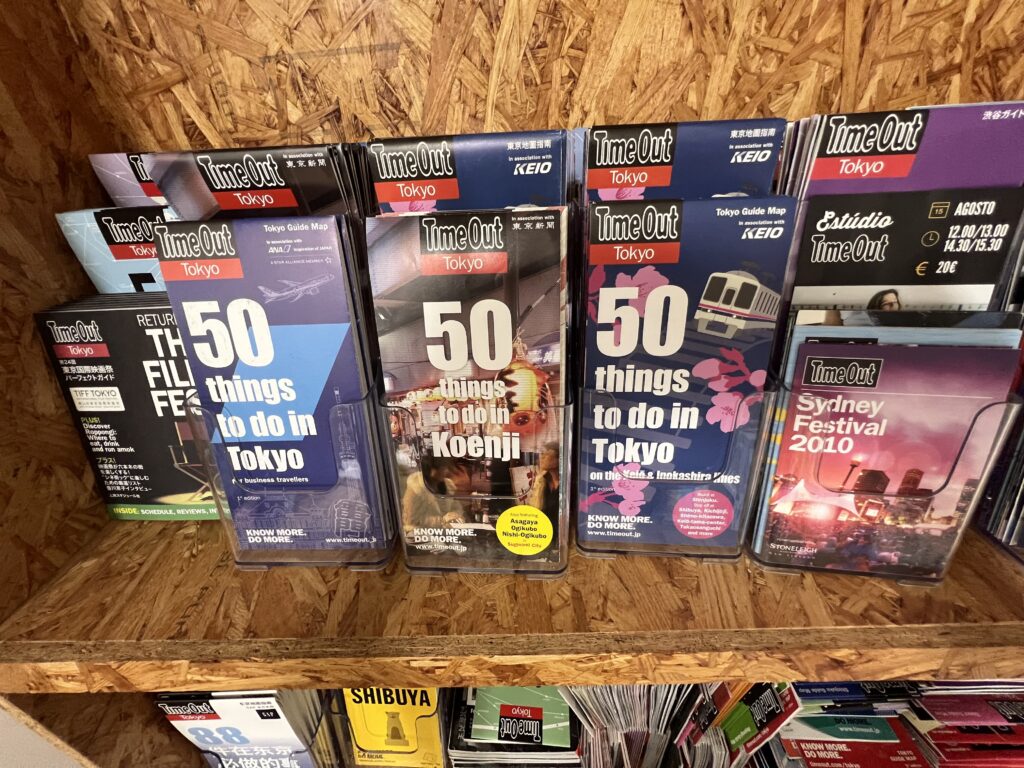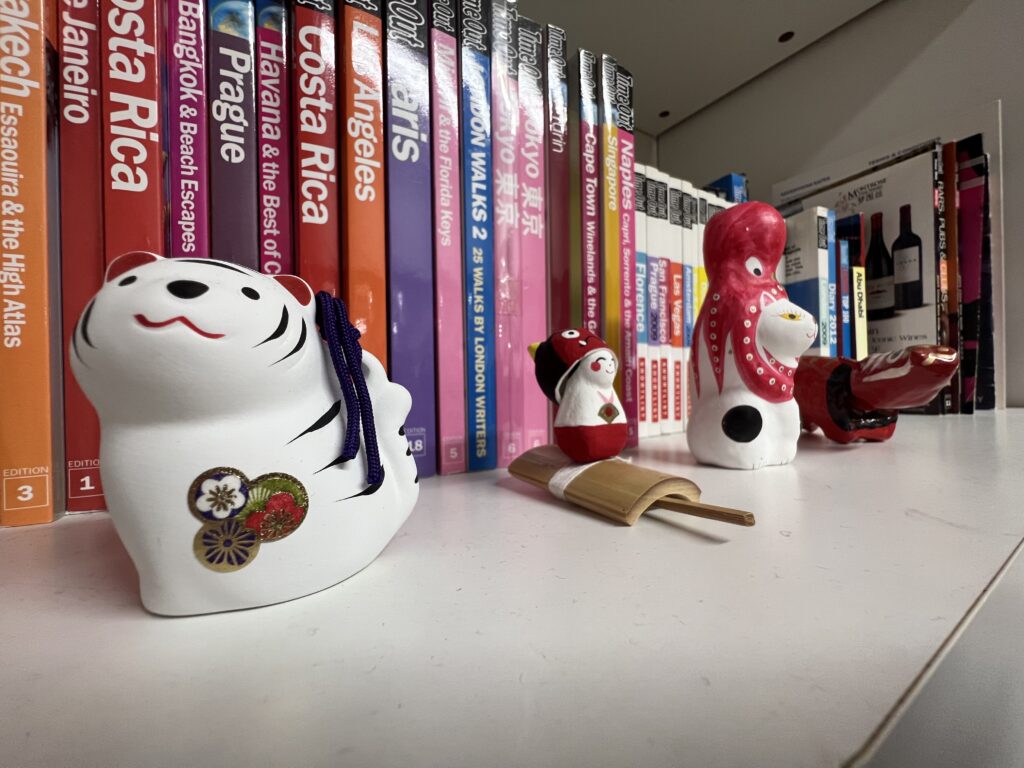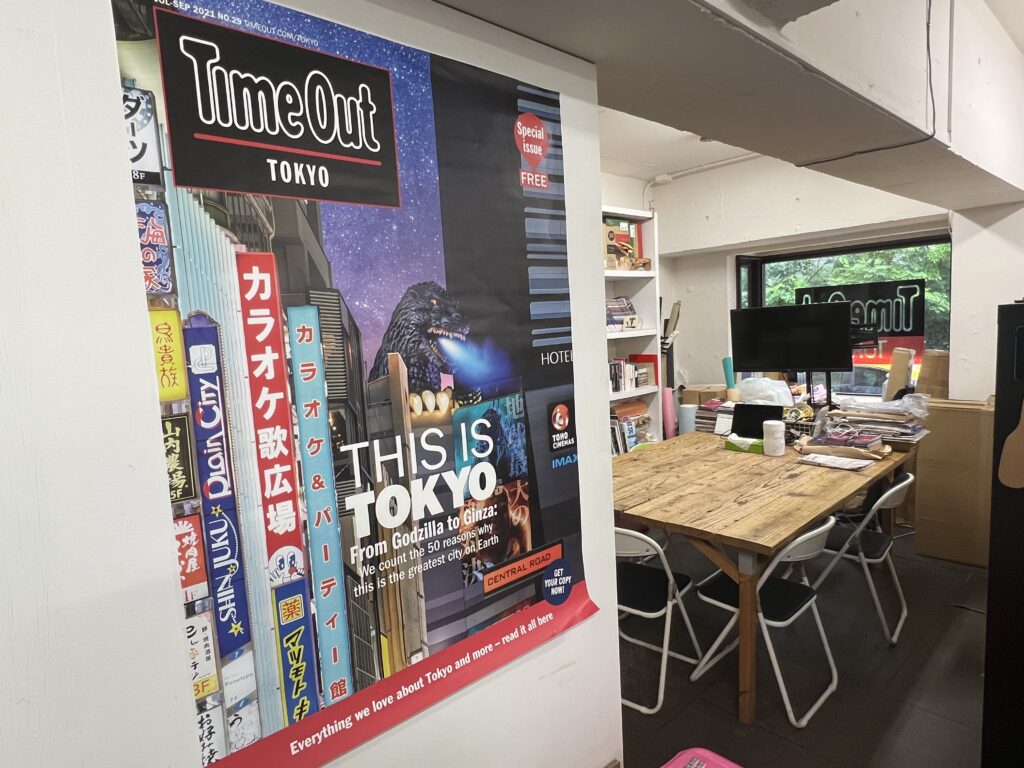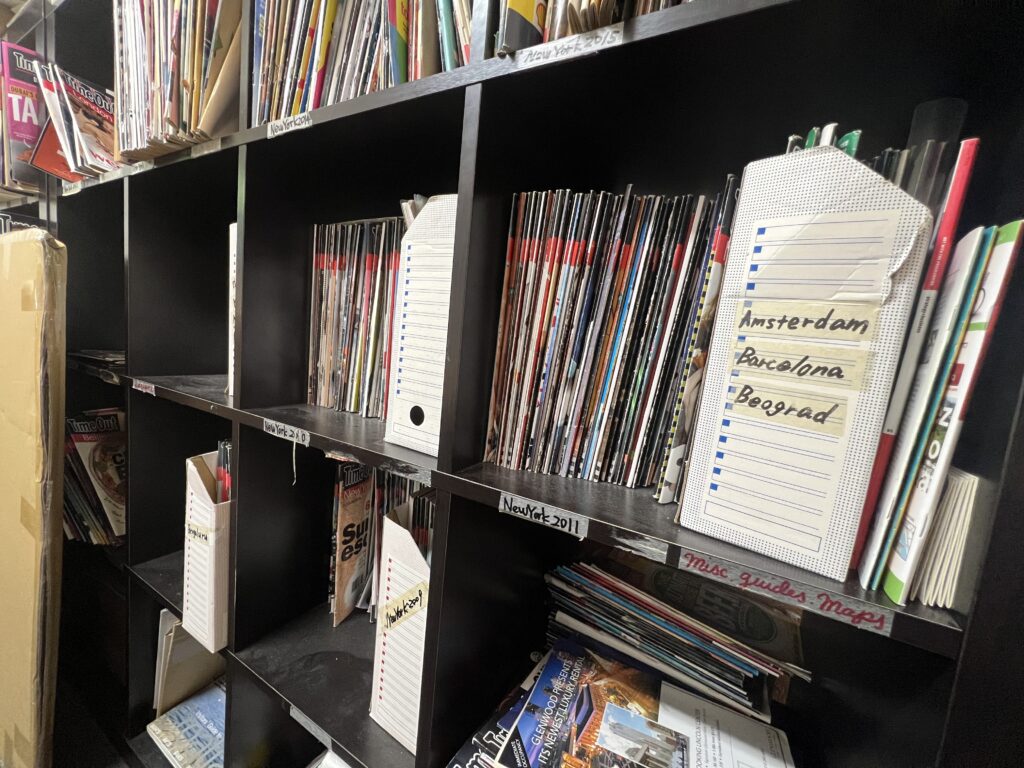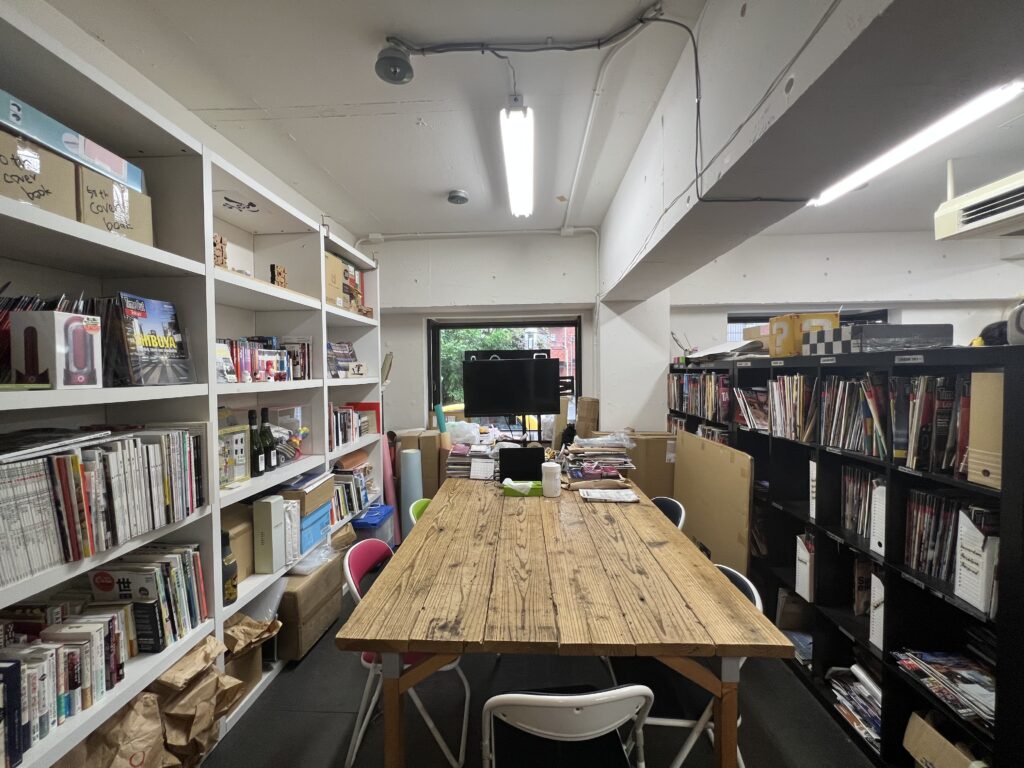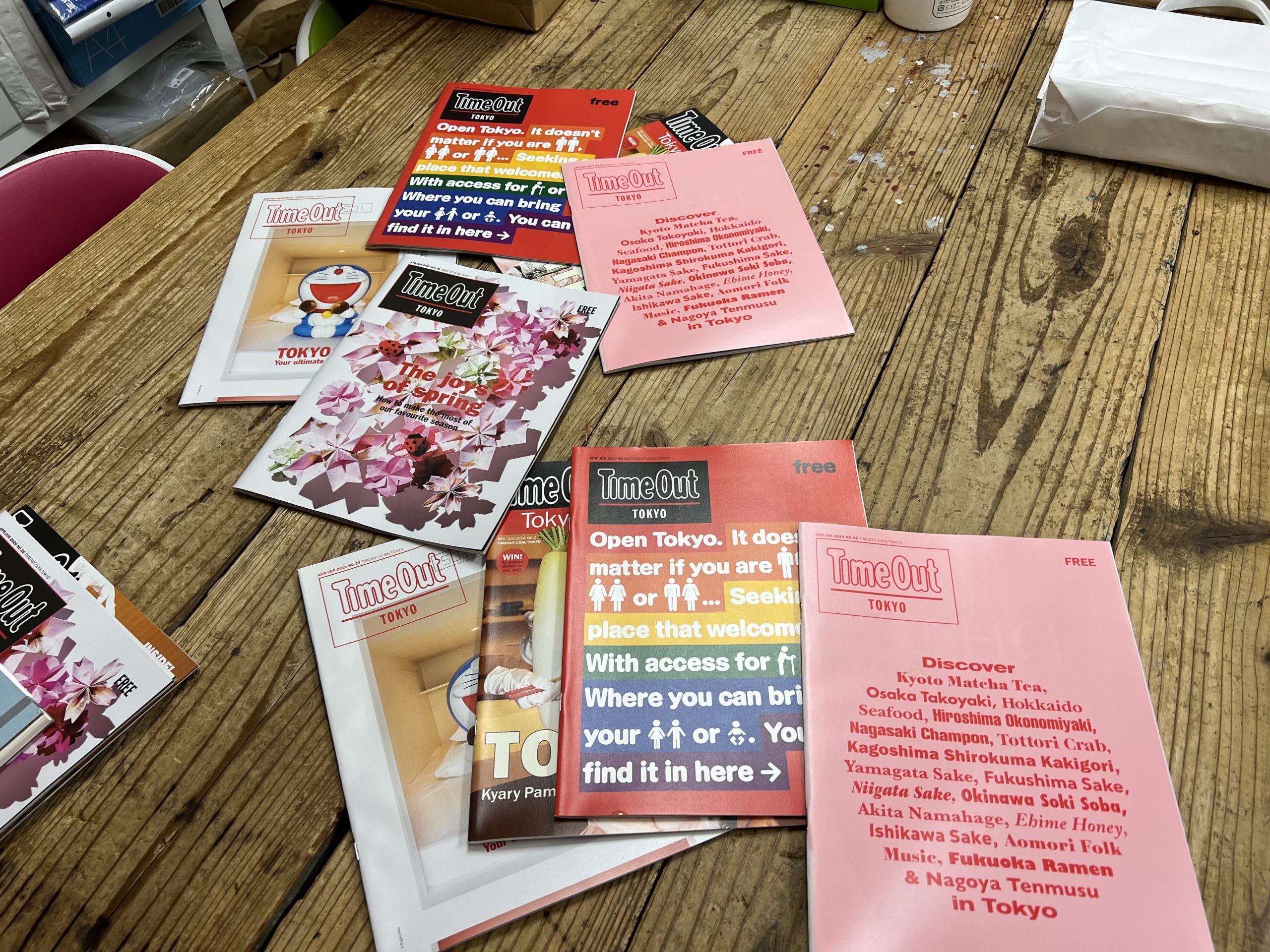
Former publications of Time Out Tokyo. The print edition ceased during the Covid-19 pandemic, but is on track to start up again soon.
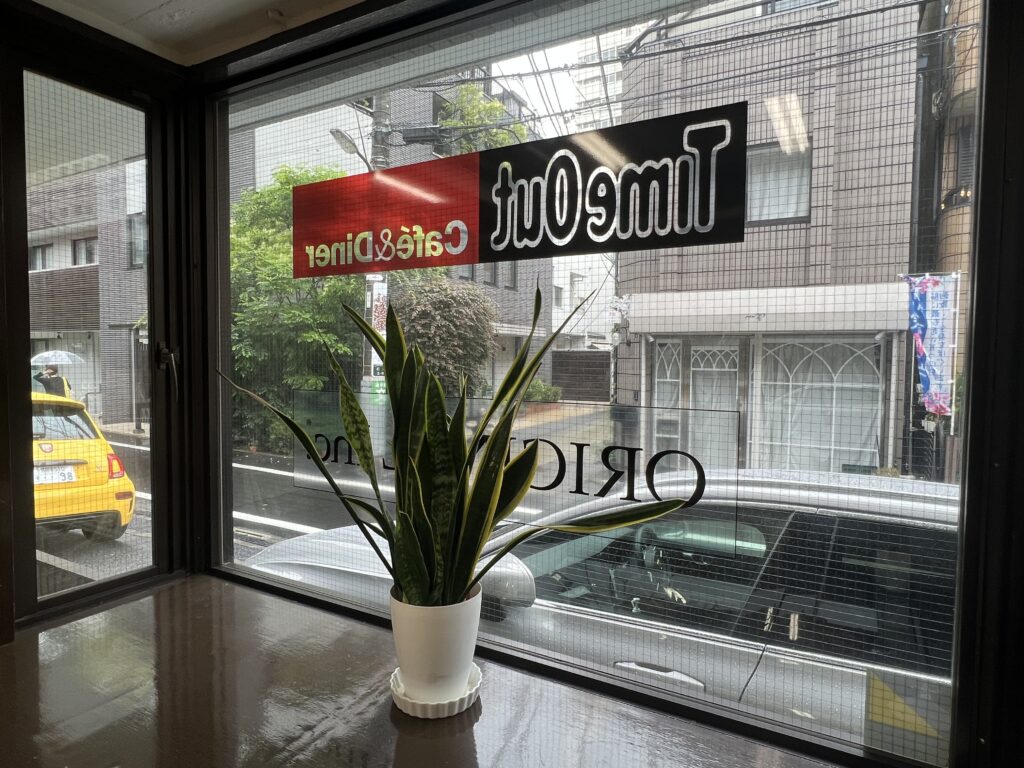
Nestled within the heart of Japan, Tokyo stands as an epitome of modernity intertwined with rich cultural heritage. Amid its bustling streets and towering skyscrapers lies a treasure trove of hidden gems that await discovery by intrepid explorers.
So many hidden gems, in fact, that deciding what to do on any given day – as a native or a tourist – can be overwhelming.
Enter Time Out Tokyo, a definitive guide that uncovers the city’s best-kept secrets, offering a glimpse into the soul of Japan’s capital. With a finger on the city’s vibrant pulse, Time Out Tokyo serves as an indispensable companion, revealing Tokyo’s lesser-known attractions, culinary delights and cultural experiences that lie beyond the well-trodden tourist paths.
A quirky place to work
Entering Time Out Tokyo’s office is a venture that, in itself, feels like uncovering a rarely seen layer of Tokyo. Tucked away behind a nearby park, down a quiet street, the nondescript building is easy to miss.
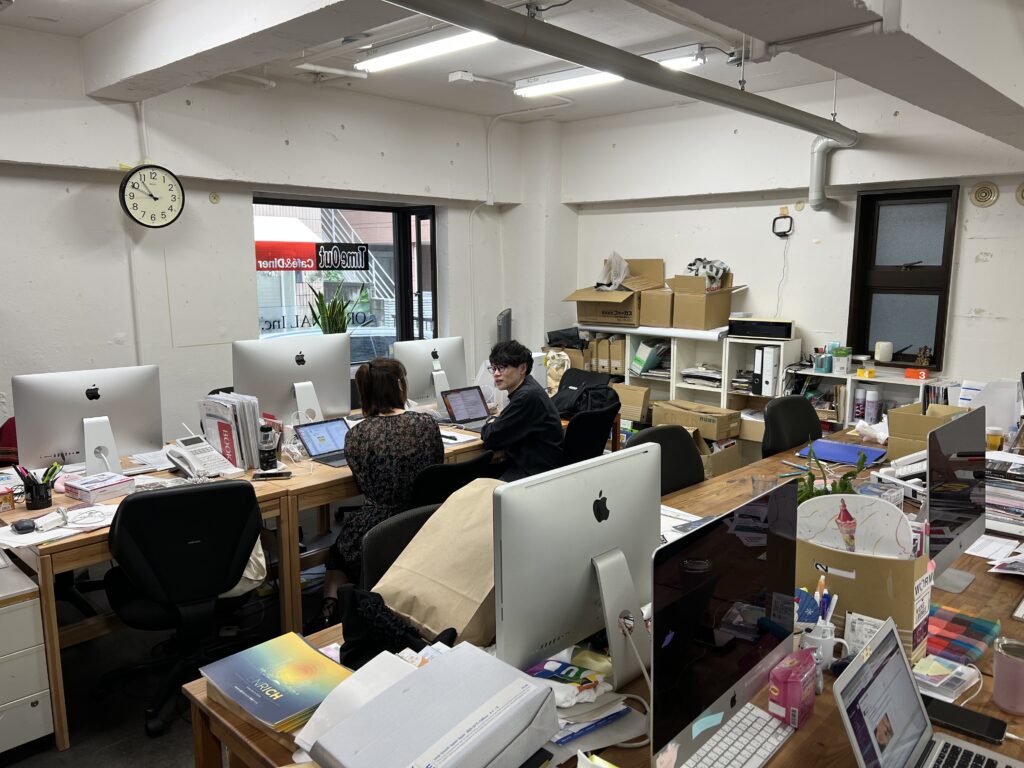
Once inside, there is an immediate air of a fun-but-hard-work environment – the five or so rows of computers are lined up so that, when workers are at their desks, they could easily turn around and high-five their neighbor, should they so choose.
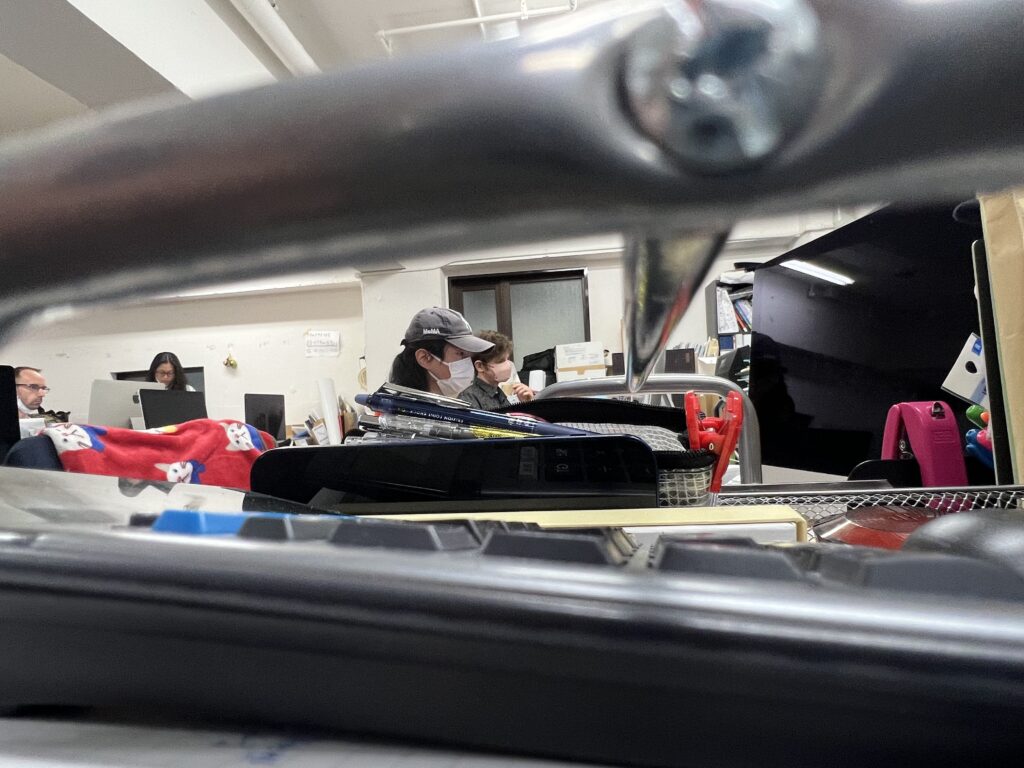
The writers are hard at work researching their next features: Google maps are pulled up, company websites consulted. Employees are rapidly Slacking each other from across the room (Slack is a professional instant messaging tool). Papers pile high on desks adorned with snacks, coffee cups, colorful stationery, other publications, personal photos and even blankets.
Adjacent to the main newsroom is a conference table surrounded on three sides by bookshelves. Mostly, the shelves contain previously published Time Out Tokyo magazines – some dating back to the very first year of publication. One shelf holds Time Out Tokyo city guides, folded into neat, pocket-sized rectangles so tourists can easily carry them throughout the city.
There also is an entire “wall” (really, just a bookshelf dividing the conference area from the news area) dedicated to Time Out publications from other cities, including New York and London.
Trinkets, expensive toys and even bottles of wine dot the shelves throughout. According to Momo Ando, office manager, many of these trinkets are gifts from Time Out Tokyo partners, sent as thank-yous or as holiday gifts.
“It’s so funny, those weird little relationships you form as a journalist, and weird little connections,” Ando said. “I think that bottle of Enoteca wine there has been here for about 10 years.”
Choosing the best places for a good time out in Tokyo
Time Out Tokyo is part of the global platform Time Out, which, per its website, spans 328 cities across 58 countries. It has a monthly global audience of about 137 million across all channels. Time Out, founded in 1968, is dedicated to informing readers about food, drink, nightlife, attractions, art, culture, shopping and travel.
Time Out Tokyo was founded in 2009. It publishes its content in both English and Japanese to better serve local and tourist audiences alike.
“We are English-language, so we are catering to the tourist market,” Editor in Chief Lim Chee said.
The publication determines what events to cover each week during its budget meeting. The editors do not set a certain number of pieces for restaurants, events, attractions, etc. Instead, content is generated in one of two ways.
1. What is happening in the city right now?
“March-April is our peak season,” Chee said. “[In summer], you don’t get as many tourists [visiting Japan], and there aren’t as many things happening in the city.”
So, during seasons in which events are fewer, Time Out Tokyo may, for instance, up its quantity of restaurant and bar reviews. In spring, when festivals and experiences are more abundant, readers are likely to see more features on those types of events.
“It’s not a factory line,” Chee said. “You don’t say, ‘Today I want 10 listings.’ It doesn’t work that way, because, depending on what topic you’re covering, sometimes a feature or listing requires more time, more in-depth research. I would say [what we cover] is very dependent on what’s happening in the city.”
2. Sponsored content
While Time Out Tokyo is independent, it does, of course, need to be sustainable. The publication brings in revenue in three ways: display ads, sponsored content and white label content.
Display ads are the advertisements displayed on the website – companies can pay for a spot on Time Out Tokyo’s webpages, where they know plenty of eyes will see it.
White label content and sponsored listings are somewhat similar, but are, overall, drastically different. White label content is written by Time Out Tokyo writers, but is catered to the style of the company paying for it.
“Clients come to us wanting us to write about certain activities in certain areas, but they want it written in a way that maybe suits their brand tone, rather than Time Out’s brand tone, so that can be done,” Chee said.
Sponsored listings are, similarly, commissioned by clients looking to feature specific events, restaurants or happenings. However, unlike white label content, these listings live on the publication’s site and carry the Time Out branding.
“Clients can pay for features or listings,” Chee said. “However, these are clearly marked in the article: this is paid for, and it’s not written objectively.”
When time out is prohibited
One notable item missing from Time Out Tokyo’s colorful bookshelves: print publications from 2020-2023. The elephant in the room must be addressed: how did a publication dedicated to highlighting social events survive a global pandemic that forced everyone into isolation?
“We sort of changed the whole brand for a while,” Chee said. “We called it ‘Time In Tokyo.’”
In a stroke of brilliance, the Time Out team completely pivoted its focus during COVID. Instead of highlighting restaurants, festivals and other social outings, it featured streaming events, things to watch online and things to do at home.
“We also started going inward, talking about the city – how much we love the city, things we enjoy about it, what we missed,” Chee said. “It was almost like a time of reflection, instead of just going out chasing what to do next.”
The “Time In” branding lasted about six to seven months, and was not only a phenomenal adaptation to the pandemic, but kept every staff member employed.
“We did not have any layoffs,” Chee said.
The one thing that did change, Chee said, was the print publication. The physical magazine, which previously published every quarter, disappeared from shelves for a few years, but the company is on track to bring it back in the coming months.
Inside the pages of Time Out Tokyo
So – what might one find within Time Out Tokyo? Here’s a sampling:
Unveiling Tokyo’s hidden wonders
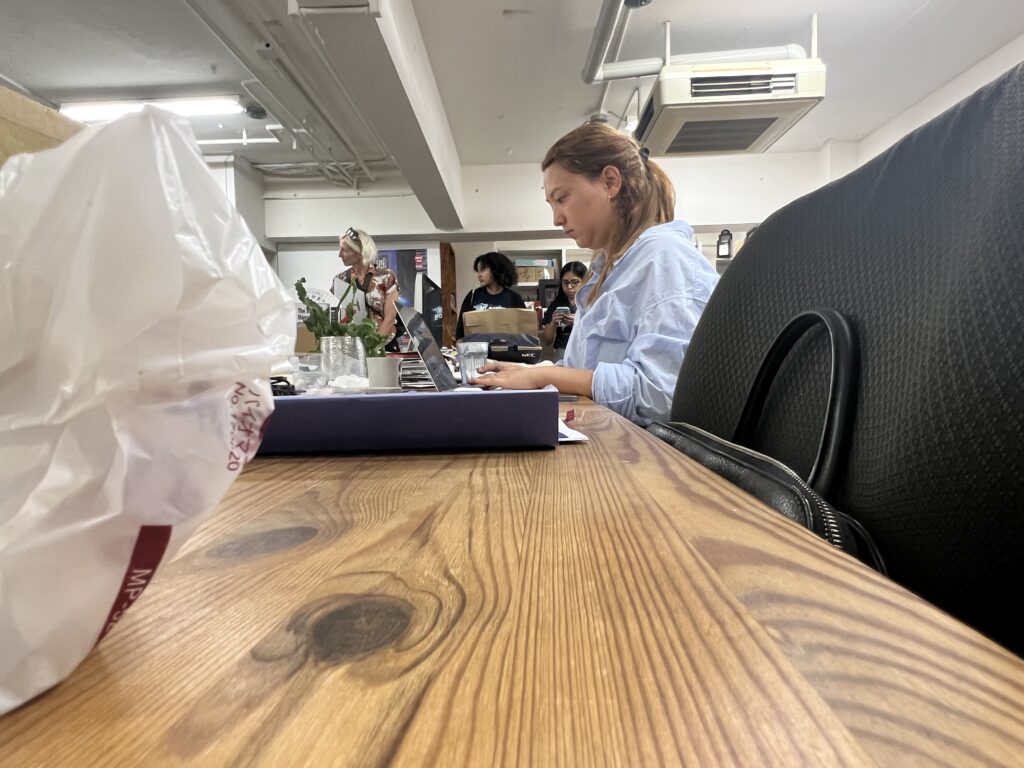
Time Out Tokyo skillfully navigates the labyrinthine cityscape to unearth its hidden wonders. From tucked-away alleys teeming with traditional izakayas (Japanese pubs) to tranquil gardens tucked behind towering buildings, the publication unravels Tokyo’s secret tapestry. It shines a light on lesser-known neighborhoods such as Shimokitazawa, Nakameguro and Koenji, where hipster culture, vintage boutiques and indie music thrive.
The publication also unearths Tokyo’s architectural marvels that often go unnoticed. Readers are introduced to architectural gems such as the iconic Nakagin Capsule Tower and the historic Edo-Tokyo Open Air Architectural Museum. Time Out Tokyo encourages visitors to explore the city’s vast array of museums, including the Mori Art Museum and the Tokyo National Museum, housing priceless artifacts that tell Japan’s captivating story.
A culinary journey through Tokyo’s food scene
One cannot truly experience Tokyo without embarking on a culinary adventure, and Time Out Tokyo acts as a trusted gastronomic guide. From highly-rated restaurants to humble street food stalls, the publication leaves no stone unturned in its quest to highlight the city’s diverse food scene.
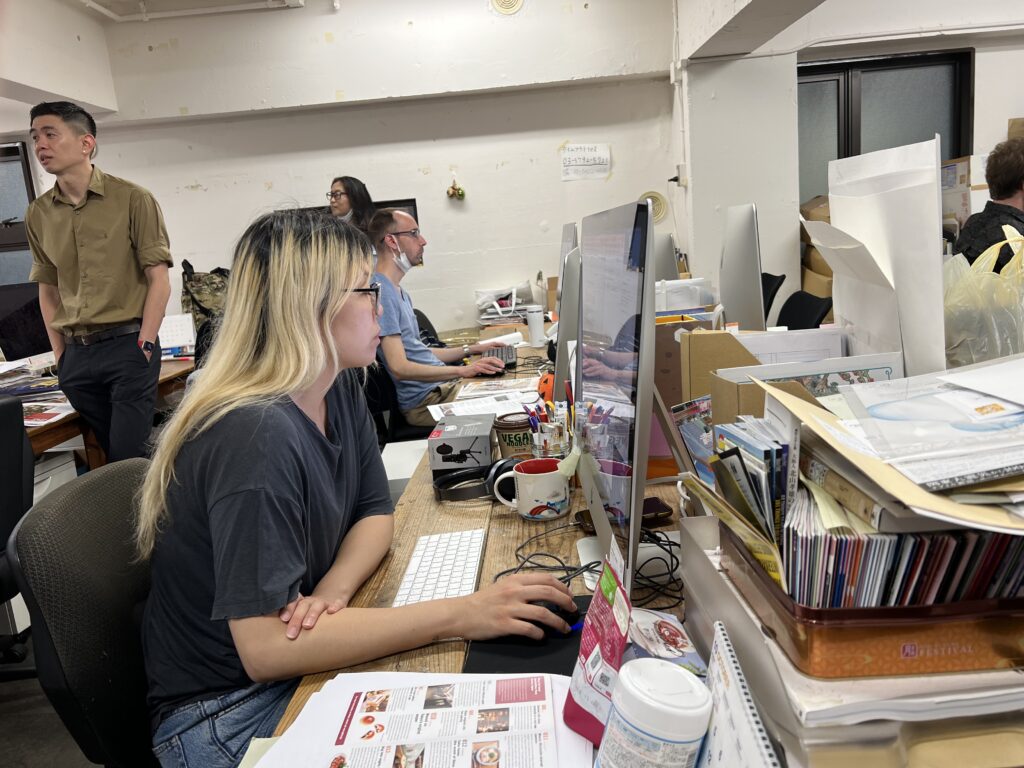
Readers are enticed with a multitude of choices, from sushi masterclasses at Tsukiji fish market to ramen battles in the ramshackle streets of Shinjuku’s Omoide Yokocho. The publication also delves into the world of kaiseki (traditional multi-course dining) and showcases hidden gems that serve delectable tempura, yakitori and soba.
Time Out Tokyo also goes beyond traditional Japanese cuisine, showcasing the city’s global influences. It guides readers to international dining establishments, where they can savor authentic flavors from around the world. Whether it’s enjoying the best Italian pizza in Daikanyama or indulging in fusion cuisine in Roppongi, the publication celebrates Tokyo’s cosmopolitan culinary landscape.
Immersive cultural experiences
Tokyo is a melting pot of traditional and contemporary culture, and Time Out Tokyo bridges the gap between the two, offering readers an array of immersive experiences. The publication provides insights into traditional tea ceremonies, calligraphy classes and kabuki performances, allowing visitors to delve into Japan’s rich cultural heritage.
For those seeking the cutting edge of Japanese pop culture, Time Out Tokyo uncovers the latest trends in fashion, music and anime. From exploring the vibrant streets of Harajuku to attending J-Pop concerts in Akihabara, readers can immerse themselves in the city’s dynamic subcultures.
Moreover, the publication highlights seasonal festivals and events that breathe life into Tokyo’s calendar throughout the year, from the mesmerizing cherry blossoms of spring to the captivating illumination displays during winter.
